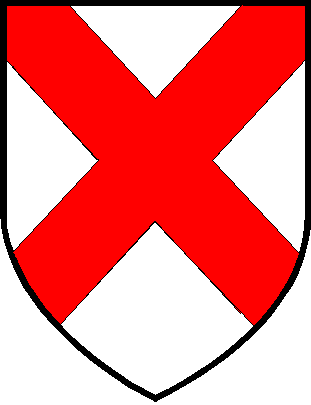 to Bios Page
to Bios Page to
Family Page
to
Family Page to Peerage Page
to Peerage Page to Home Page
to Home PageJames FITZTHOMAS FITZGERALD
(17th E. Desmond)
Acceded: 10 Oct 1598
Died: 1607, Tower of London, London, Middlesex, England
Buried: 28 Apr 1607, St.Peter's Chapel
Notes: The Complete Peerage vol.IV,p.256.
Father: Thomas Ruadh FITZGERALD of Conna (Sir)
Mother: Ellice POER
Married 1: Dau. CAHIR
Married 2: Margaret POWER (dau. of John Power, B. Power, and Eleanor Fitzgerald) 1585
Married 3: Ellen BUTLER (C. Desmond)
Nephew of Gerald Fitzgerald, 15th Earl of Desmond. In 1598, exasperated at seeing his ancestral territories in the hands of English settlers, and at the efforts made to extirpate Catholicism, he joined Hugh O'Neill in his war, and by him was created an Earl. Hence "Sugan Earl" -an "Earl of straw"- not appointed by regular authority. He soon became a distinguished commander in Munster against the Queen. The plot for his capture, formed by Sir George Carew, fully detailed in Pacata Hibernia may be here summarized.
Dermot O'Conor Don, a valiant man, had, with a body of 1,500 kerns and gallowglasses, entered his service. O'Conor's wife was a sister of James, 16th Earl of Desmond, and with a view to promote his interests, she met the advances of Carew, and his advocate, Miler Magrath, Archbishop of Cashel, and persuaded O'Conor to betray his chief for the sum of £1,000. Carew furnished O'Conor with a forged letter as if from the Sugan Earl to Carew, offering to betray O'Conor. This letter was to serve as a pretext with his followers for his treachery.
Matters being arranged, O'Conor asked the Sugan Earl to an interview at Connello, on the borders of Limerick, 18 Jun 1600. After some controversy, O'Conor produced the forged letter, made the Earl a prisoner in the name of O'Neill, and carried him off to his fortress of Castleishin, in the great wood and fastnesses of Connello, in the present County of Limerick. The ruins of the castle still remain. The Earl's followers, with Pierce Lacy and others, immediately assembled, took the castle on the 26 Jun, and liberated him.
At the siege of Glin Castle, by Carew, in Jul, the Earl, with 3,000 men, watched the proceedings from a distance without being able to interfere. Afterwards, while on his way to the Castle of Aherlow, he was attacked by a strong body of troops from Kilmallock, and after a skirmish, was defeated and driven to seek refuge elsewhere. even at this low ebb in his fortunes, so strong was his hold on the affections of the people, that the plan of bringing over the "Queen's Earl" completely failed in its object. The successes of Carew, however, left him a hunted fugitive flying from forest to forest, on the Galtee mountains, and in Aherlow glen, Dermond O'Dogan, now escaping by changing clothes with a follower, who allowed himself to be taken in his place. He was upheld through all by the hopes of Spanish succour.
Carew
made two attempts to have him assassinated; both of which resulted in the death
of those who had undertaken the task. All efforts to suborn his immediate
followers proved unavailing. At length, his relative, the "White Knight"
agreed for the sum of £1,000 to discover his retreat and betray him. He came
upon him concealed in a cave on the Galtees, on 29 May 1601, and effected his
capture, although the Earl appealed to his honour as a gentleman, and to
the ties of relationship between them.
He was first imprisoned in the White Knight's castle of Kilvenay, and
afterwards removed in fetters to Cork.
Carew was careful to
preserve him alive, lest the English adventurers might possibly be baulked of
the plunder of his estates by their reverting to an heir, for the confiscation
of whose property no legal pretext could be found.
On 22 Jun Desmond wrote an appeal to the Queen to spare his life, but nobly refused to have any share in betraying O'Neil to the Government, which it was hinted, would ensure his restoration to favour.
He was immured in the Tower on 13 Aug 1601. Sir George Carew, in sending him to London, wrote of him as being "a man the most generally beloved by all sortes (as well in this towne as in the contrey) that in my life I have ever known"; and calls him a "dull spirited traitor" for not being willing to entrap his associates.
His mind soon succumbed under the confinement of the Tower. His death took place about 1608, and he was interred in the chapel of the Tower.
The Desmond Pedigree states: "Apart from the matter of his rebellion, he ever proved himself an honourable, truthful, and humane man". Cox says he was one of the handsomest men of his time. He did leave at least one illegitimate male descendant.
Sources:
Burke, Sir Bernard. Dormant, Abeyant, Forfeited, and Extinct Peerages. London, 1866
Geraldine Documents: Edited by Rev. James Graves: in Journal of the Archaeological Association of Ireland, October, 1869
Lodge's Peerage of Ireland. Revised and Enlarged by Mervyn Archdall. 7 vols. Dublin, 1789.
 to Bios Page
to Bios Page |
 to
Family Page
to
Family Page |
 to Peerage Page to Peerage Page |
 to Home Page
to Home Page |